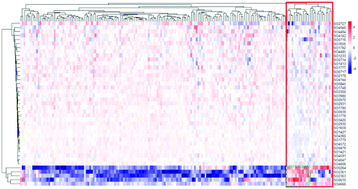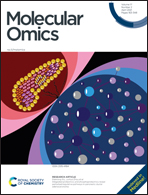Genome-scale mutant fitness reveals versatile c-type cytochromes in Shewanella oneidensis MR-1†
Abstract
Shewanella has been widely investigated for its metabolic versatility and use of a large number of extracellular electron acceptors. Many c-type cytochromes are responsible for this diversity, mainly in condition-specific fashions. By using genome-scale mutant fitness data, we studied which genes (particularly c-type cytochromes) were used to coordinate various electron transfer processes in the present work. First, by integrating fitness profiles with protein–protein interaction (PPI) networks, we showed that the genes with a high total fitness value were generally more important in PPI networks than those with low fitness values. Then, we identified genes that are important across many experiments, and further fitness analysis confirmed five versatile c-type cytochromes: ScyA (SO0264), PetC (SO0610), CcoP (SO2361), CcoO (SO2363) and CytcB (SO4666), which are considered to be crucial in most experimental conditions. Finally, we demonstrated a mediating role in the periplasm for the less-reported CytcB by combining protein structure, subcellular localization and disordered region analysis. Comparative genome analysis further revealed that it is distinctive in Shewanella species. Collectively, these results suggest that periplasmic electron transfer processes are more diverse and flexible than previously reported, giving insight for further experimental studies of Shewanella oneidensis MR-1.



 Please wait while we load your content...
Please wait while we load your content...